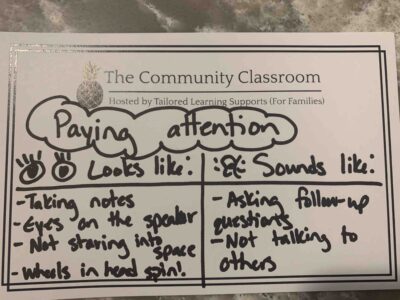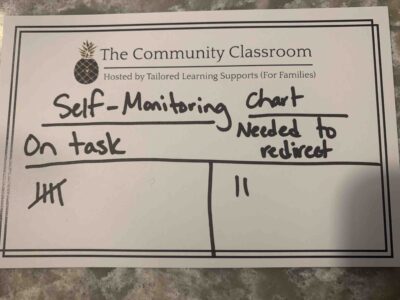6 Tips to Help Your Child Pay Attention
Strategies to Help Your Child Pay Attention
Looking for strategies to help your child with paying attention, whether in Zoom school or at home? Here are six researched-based strategies that you can try with your child (or use yourself as a grown-up!). We should begin by saying that every child is different, every person is different. There is not a one-size-fits-all strategy to paying attention, but hopefully, something in this list lands and you have a parenting strategy or two to add to your bag of tricks.
A video version of this article can also be viewed here.
1. Start with 10-15 minutes of unstructured play.
Studies have found that if there is unstructured play before children dive into a brainpower-consuming task, they have an increased chance of success and an increased ability to focus. There are a couple of caveats with this. It must be unstructured play. That means is it’s kid-directed and is not adult-led, and it’s voluntary. No “forced family fun “or parent-led games with unstructured play. The second caveat involves the length of time. Some studies have found the magic-length of time is 10-30 minutes, others have found that over 30 minutes actually has that opposite effect (and that is something we don’t want!). In addition to focus, there are so many other benefits that come with unstructured play.
2. Unpack what it actually means to “pay attention.”

T Chart for Paying Attention
We use phrases as adults that have a lot of underlying meaning and aren’t direct in helping kids figure out exactly what that means for their actions. “Pay attention” is one of those phrases. How does one actually “pay attention?” We suggest making a t-chart with your child (like the one pictured), working with them to unpack what it actually looks like, sounds like, and is to “pay attention.” This would be a great visual to post up by a child’s desk, so they have the reminders when needed. Eventually that visual can be taken down because the chart will have transferred to their long-term memory.
3. Teach your child to self-monitor.
Our goal as parents and educators is not just to correct behavior, but to teach our children the skills and strategies so they can do it themselves. Have a conversation about what it means when your mind wonders and are not paying attention. Set a timer for every 10-15 minutes. When the timer goes off, have your child reflect on whether or not they were paying attention. They can chart their work on another t-chart, like the one pictured below.
And then here’s the kicker: Make sure your child knows some strategies to employ when they are not paying attention. And yes, you know what’s coming—make another chart WITH your child and post that somewhere they can see it.
4. Break up larger tasks.
Sometimes we aren’t paying attention because our brains are in overload-mode, overwhelmed with a big, hairy task at hand. There are two ways we can break up tasks to help our children stay focused. One is by smaller steps; one is by chunks of time. If we are breaking up a larger task into smaller steps, we need to begin by breaking down that larger task into a series of smaller steps. I also suggest that we don’t have our children look at all of those steps at once—25 steps would be overwhelming to anyone! If we look at 3-5 steps at a time, tasks seem bite-sized and more manageable. Breaking a large task into chunks of time is another simple strategy to increase focus. Knowing you are going to spend hours engaged in one task can cause your brain to spin and disengage. Ask anyone who has tried to clean out their closet. Knowing you are going to dedicate just 20 minutes to a task seems doable. Nerdy fact: This is called microproductivity. Here’s a handout from Bowdoin College to help walk you and your child through the process.
5. Declutter your child’s learning space.
It’s hard to keep our focus on anything if there is a scattered mess around us. Even neat spaces can be distracting if there are gadgets within reach asking to be picked up and played with.
6. Enjoy a few memory games.
Improving working memory can impact focus. So games like I spy, memory matching, even a license plate game where you recite a license plate forward and then backward can build a stronger working memory!
We hope these six tips to help your child pay attention can help you try some new skills out the next time the mind is wandering during homework. For further reading on the topic of paying attention, check out some of these great articles below.
- This article from Time Magazine on the power of play
- This article from The Atlantic on the cognitive benefits of play
- This article by Understood.org on self-monitoring
- This article from Understood.org on working memory boosters
- This handout on breaking down large projects from Bowdoin College
If you’d like to watch a VLOG version of this article, you can do so here.
And if you’re looking to have a one-on-one parent coaching conversation about this topic with our staff, find more information here on ways we can serve you and your family.



0 Comments